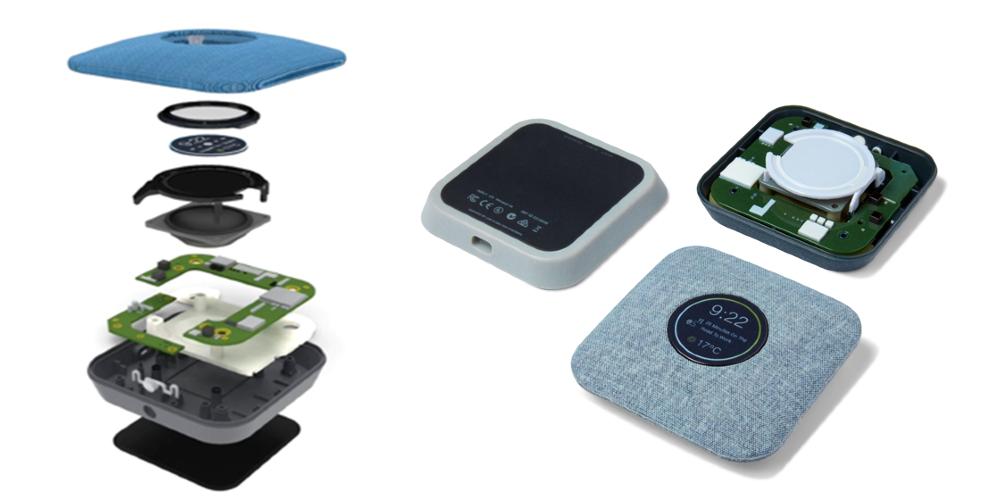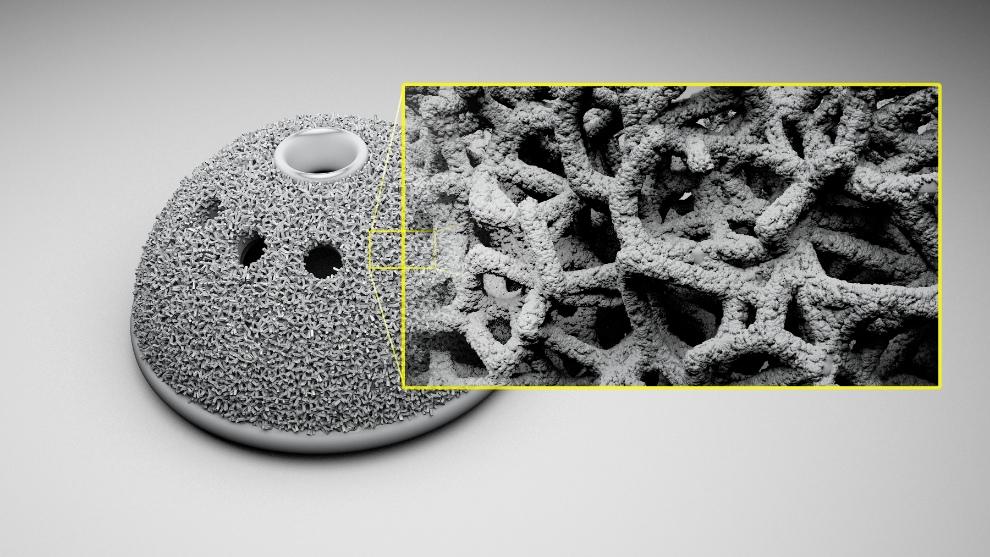- FMA
- The Fabricator
- FABTECH
- Canadian Metalworking
Our Publications
Categories
- Additive Manufacturing
- Aluminum Welding
- Arc Welding
- Assembly and Joining
- Automation and Robotics
- Bending and Forming
- Consumables
- Cutting and Weld Prep
- Electric Vehicles
- En Español
- Finishing
- Hydroforming
- Laser Cutting
- Laser Welding
- Machining
- Manufacturing Software
- Materials Handling
- Metals/Materials
- Oxyfuel Cutting
- Plasma Cutting
- Power Tools
- Punching and Other Holemaking
- Roll Forming
- Safety
- Sawing
- Shearing
- Shop Management
- Testing and Measuring
- Tube and Pipe Fabrication
- Tube and Pipe Production
- Waterjet Cutting
Industry Directory
Webcasts
Podcasts
FAB 40
Advertise
Subscribe
Account Login
Search
A richer 3D printing file format is growing in popularity
3D printing consortium pushes to replace STL with the 3MF file format
- By William Leventon
- July 28, 2020
- Article
- Additive Manufacturing
Stereolithography (STL) is the oldest and most popular format for 3D printing files. But an influential group that believes STL’s long reign should end has been pushing an alternative called the 3D Manufacturing Format (3MF).
According to the group, known as the 3MF Consortium, 3MF allows design programs to send full-fidelity 3D models to other 3MF-compatible programs, platforms, services, and printers. A complete package of model information—including data on colors, textures, and materials—can be contained and delivered in a single file.
Introduced in 2015, 3MF started out as a Microsoft initiative. When the idea for it was conceived, “the file formats available were ancient,” said Alexander Oster, director of additive manufacturing at Autodesk Inc. and chairman of the 3MF Consortium’s technical working group.
Besides being old—STL dates back to the 1980s—it is “very simplistic,” Oster noted. Therefore, most printers use file formats such as OBJ or VRML in addition to STL.
Though more sophisticated than STL, these formats also are more complicated to use, according to Michal Diga, product director of PolyJet software solutions for the 3D printing firm Stratasys, a member of the 3MF Consortium.
Looking at OBJ, VRML, and other existing options, Microsoft and its partners concluded that none of them could meet their goals for 3D printing. This meant that a new file format was needed. The partners decided that the best approach was a group effort with broad industry involvement to achieve the widest possible adoption of the new format.
So the partners launched the 3MF Consortium and invited all companies in the 3D printing industry to join. Microsoft donated the new file format work it had already done to serve as the starting point for the consortium’s effort.
What 3MF Offers
3MF eliminates obstacles that used to make it difficult, or even impossible, for designers to get exactly what they wanted in a printed object.
“In the world of STL, you made sacrifices in your design,” said Gina Scala, Stratasys’s director of product marketing for design. “But with 3MF, you do not have to sacrifice when you go from your design program to a 3D print.”
Designers using STL can send a shape or geometry to someone from their CAD system, Diga said. But to convey the color, finish, or texture of the geometry, they have to follow up by phone, email, or PowerPoint. 3MF, on the other hand, “documents everything in one package,” she said.

Side-by-side comparison of a KeyShot software rendering of a concept speaker and the final product, 3D-printed from 3MF files. Stratasys
Oster said comparing STL to 3MF is like comparing a text file to a Word or PDF file. “3MF is a much richer format—rich enough to define all the important information about a model,” he said.
In the past, Oster noted, the only way designers could take advantage of the capabilities of a full-color printer was to communicate color information using multiple OBJ files. With 3MF, however, all color information is contained in one file that can be easily shared.
As for materials, STL is fine for those who need to print just one material because of the limited amount of data that needs to be transmitted to the printer. But consider a situation in which more than one material is being used to print a number of different parts at the same time.
“With STL, it’s very cumbersome to store this information,” Oster said. “But with 3MF there is one relatively small, saved file that is easy to store and share. When you open it you have all the material assignments and the part layout on the print bed.”
According to Oster, the core 3MF specification is now fixed and unlikely to change except for minor details. But extensions are being added that relate to different subsets of 3D printing applications. These extensions can include attributes not offered by other file formats.
One 3MF extension holds metadata for a model, including a description, who designed it, and when it was created. Another recently released extension allows end-to-end encryption of 3D printing content to protect sensitive information, like patient data.
“The bottom line is that [3MF] can include anything you want,” Diga said. “If the format today doesn’t include it, you can invent it. For example, a partner and I can decide to invent a private tag or extension of the format that only we can read and understand.”
On the Bandwagon
In addition to Stratasys and Microsoft, all the other major players in the 3D printing industry are members of the 3MF Consortium. As such, these firms are committed to the use of 3MF by both mass-market and industrial printers, according to Oster.
“In recent years, we’ve had amazing adoption successes,” he said, pointing to the fact that nearly all the software in millions of mass-market printers now supports 3MF.
Still, 3MF “is not as popular as STL because STL is so old and trusted,” Diga said. “In the software world, you need a critical mass of people in order to trust that something has a future. If you see someone trying something new, maybe most times it will fail. But once you see a critical mass of big names using it, people [start] believing in it.”

The 3MF file format permits a complete package of model information—including data on colors, textures, and materials—to be delivered in a single file. Shown is a 3MF file with the part’s support structures. No other file format can capture support structures and part geometry as efficiently, say 3MF proponents. Autodesk
With companies like Stratasys, Hewlett Packard, Materialise, Siemens PLM, Dassault Systèmes, and 3D Systems on the 3MF bandwagon, Diga believes smaller players are gaining the confidence to jump aboard as well.
“More and more companies are trusting it and deciding to invest in it,” she said. “And the more they trust and invest, the quicker it accelerates.”
About the Author

William Leventon
(609) 926-6447
About the Publication
- Podcasting
- Podcast:
- The Fabricator Podcast
- Published:
- 04/16/2024
- Running Time:
- 63:29
In this episode of The Fabricator Podcast, Caleb Chamberlain, co-founder and CEO of OSH Cut, discusses his company’s...
- Trending Articles
- Industry Events
16th Annual Safety Conference
- April 30 - May 1, 2024
- Elgin,
Pipe and Tube Conference
- May 21 - 22, 2024
- Omaha, NE
World-Class Roll Forming Workshop
- June 5 - 6, 2024
- Louisville, KY
Advanced Laser Application Workshop
- June 25 - 27, 2024
- Novi, MI




























